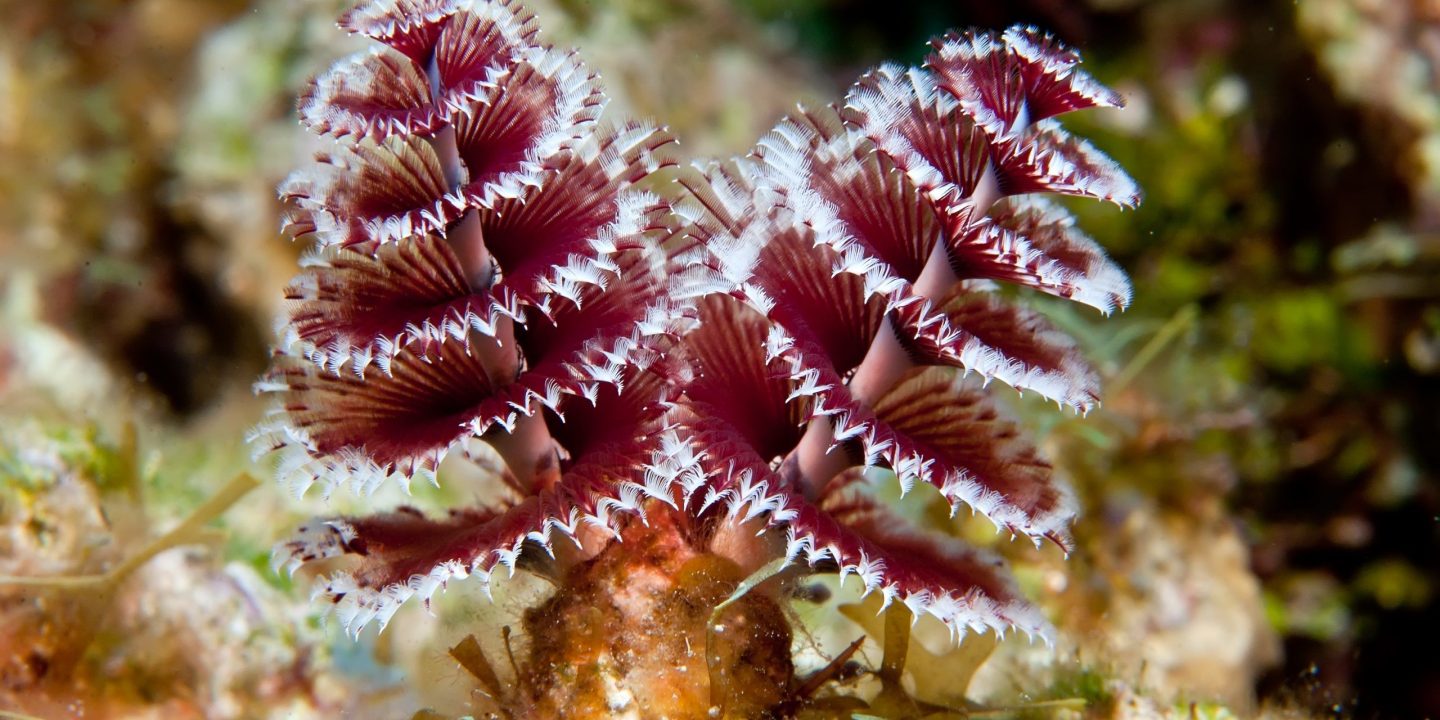In pre-Covid times, Samaneh Pazoki has visited our lab for 6 months from Iran as part of her PhD. In the meantime, she has successfully defended her PhD and we could already publish a second paper as part of her stay her. She is interested in Serpulidae from the Persian Gulf and the Gulf of Oman. Serpulidae are also called Christmas tree worms (see Spirobranchus giganteus from (c) American Oceans as the featured image) and we are also investigating them in our ArtsDatabanken project on the marine algae belt along the Norwegian coast line. Ana working on this project has presented them in a bit more detail just today as part of our 2021 advents calendar.

We investigated three species of the genus Hydroides: H. elegans, H. operculata and H. bulbosa. The first two occur worldwide and H. elegans is an invasive species, while H. bulbosa is endemic to the Persian Gulf area. An interesting question for the study was if there is break in the gene flow between the Gulf of Oman and Persian Gulf as this has been shown for many species before. However, for these sessile species it is not the case. More diverse genetic structure is observed along their entire distribution range in the populations of H. elegans and H. operculata than in the endemic species H. bulbosa. On the other hand, Extended Bayesian Skyline plots indicated that the populations of H. bulbosa and H. operculata showed signs of recent demographic expansion within the postglacial transgression time frame of the Persian Gulf, while the populations of H. elegans remained relatively constant. Hence, the endemic species H. bulbosa seems to have reacted to the glacial, while probably due to its high mobility the invasive species H. elegans is not as affected by the effects of global glacial events.

However, the most interesting finding in our paper is the possible first indication of heteroplasmy in an annelid species. Heteroplasmy is the presence of two independent lineages of the mitochondrial genome within an individual. Usually, an animal like we humans have only one lineage within an individual, which is inherited from the mother. However, in some species, especially in bivalves, more than one lineage is present within an individual. This often due to a leahage from the father to its offspring, also known as biparental mitochondrial DNA inheritance. The meticulous work by Samaneh revealed that our Sanger sequences showed double signals at several positions and that these were not random, but followed a clear pattern. The same double signal could be found at the same position. Further investigations and the finding of sequences not affected by these double signal revealed that two lineages of the mitochondrial genome are present in these individuals.

We could exclude the alternative explanation of NUMTs (nuclear mitochondrial DNA) as there are none of the indicative signs for these were present in these copies. The two distinct mitochondrial lineages differ by about 11% of genetic divergence. Hence, it is a substantial genetic distance, which is often considered to be strong enough to see these as two separate species. However, this is not the case here. These are not two species, but two highly divergent copies of the same genes within an individual. This finding has ramifications for taxonomy of this species, but also annelid or at least polychaete taxonomy in general. Other studies have already found these two clades and concluded that these might be actually two different species instead of just one. However, our data indicate that this might not be case and rather that these are two very divergent mitochondrial lineages within a species. The question is how often this also occurs in other polychaete or annelid species as double peaks are often neglected as noise. It might be just noise, we also has such cases, but it might still be worth to check if a persistent pattern is present as in our case. Even just using Sanger sequences without cloning can reveal at least indications of such cases. These results need now further confirmation by using for example genome skimming approaches to obtain entire mitochondrial genomes and hopefully both lineages at the same time. This will then also provide the possibility to definitively exclude the presence of NUMTs.
If you want to read the fully story you can do so in our article “Genetic diversity and population structure of three Hydroides species (Sedentaria, Serpulidae) in the Persian Gulf and Gulf of Oman, with the possible indication of heteroplasmy” in Systematics and Biodiversity.
![]()

2 Comments on “A new paper on Christmas tree worms from the Persian Gulf and the possible first case of heteroplasmy in Annelida”